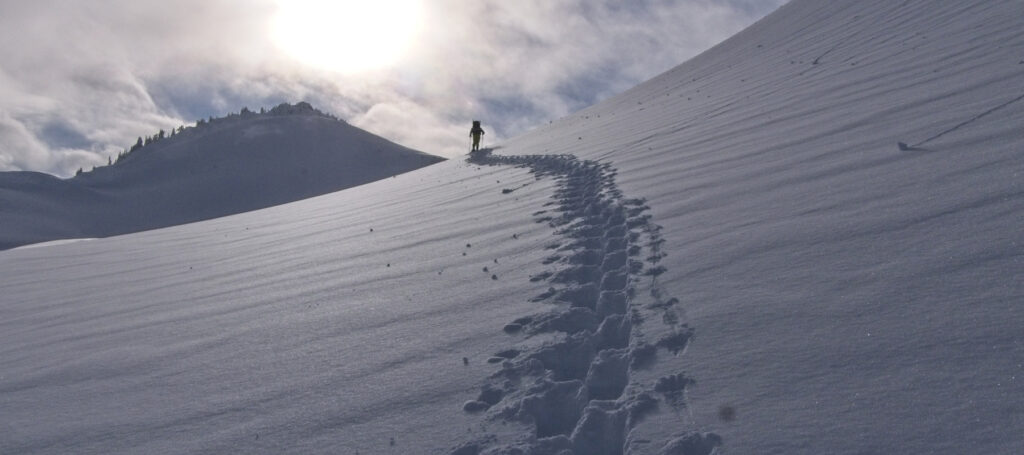Ultra-light gear is what makes winter backpacking possible. In the past people needed heavy gear to stay warm and that required pulling a sled or polk. The gear was too heavy and bulky to put it all in a backpack. Those days are gone, especially in mild winter temperatures such as are common in the Pacific Northwest. Today it is possible for a 2–3 day winter backpack to weigh between 25–35 pounds (12–16 kg). Everything can fir in a 60-liter pack and the pack itself can weigh as little as two pounds or less. Many ultra-light backpacks in the 2–2.5 lbs range are strong enough and large enough to carry all that you need.
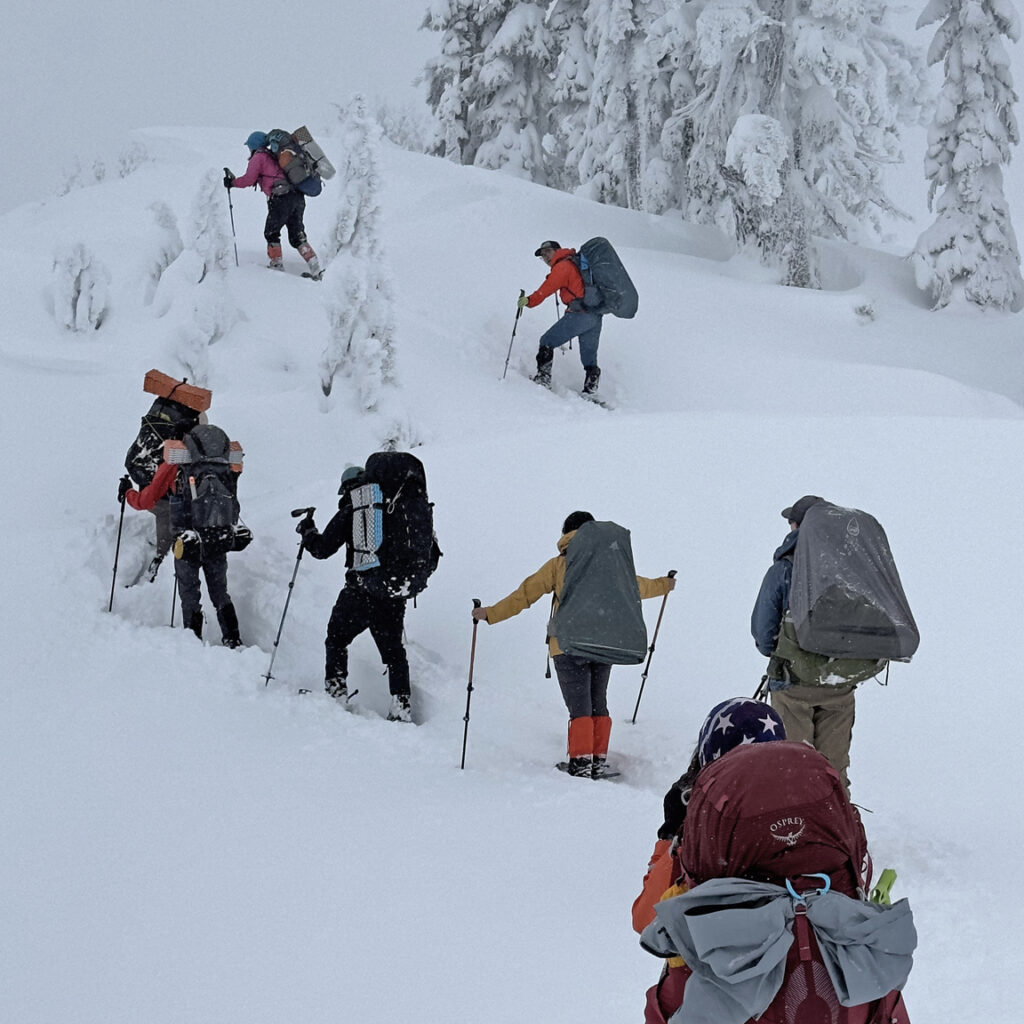
Ultra-light backpacks for winter backpacking
The Granite Gear Crown 2 or 3, the Gossamer Mariposa 60, the Outdoor Vitals Shadowlight, and others are all workable ultr-light choices for winter backpacking. Heavier backpacks, such as the Osprey Exos 58 (2.8 lbs) and Gregory Maven 65 (around 3.5 lbs) are comfortable quality packs in the same price range. There are also Dyneema backpacks that are lighter than 2 pounds, but these are more expensive. The main point is that if you can reduce your backpack weight it is worth it, especially if there is no significant cost difference. Reducing tent and sleeping bag weight tends to require spending more money.
The importance of fit
Try to order a backpack that fits your body. What works for one person may not be comfortable for someone else. Know your torso size and measurements and provide those to a customer service representative before making a purchase. Before removing all the labels, load the pack with 30–35 pounds of gear and try it on for comfort.
Avoid buying a pack that has a load capacity that is equal to or below your requirments. If the load capacity is 35 pounds and your heaviest requirements is 32 pounds, then the pack should be comfortable.
Hip belts
Always check the fit and hip belt size before buying. The Granite gear hip belt will go down to 24 inches (24–40″), whereas Outdoor Vitals Shadowlight only goes down to 28 inches.
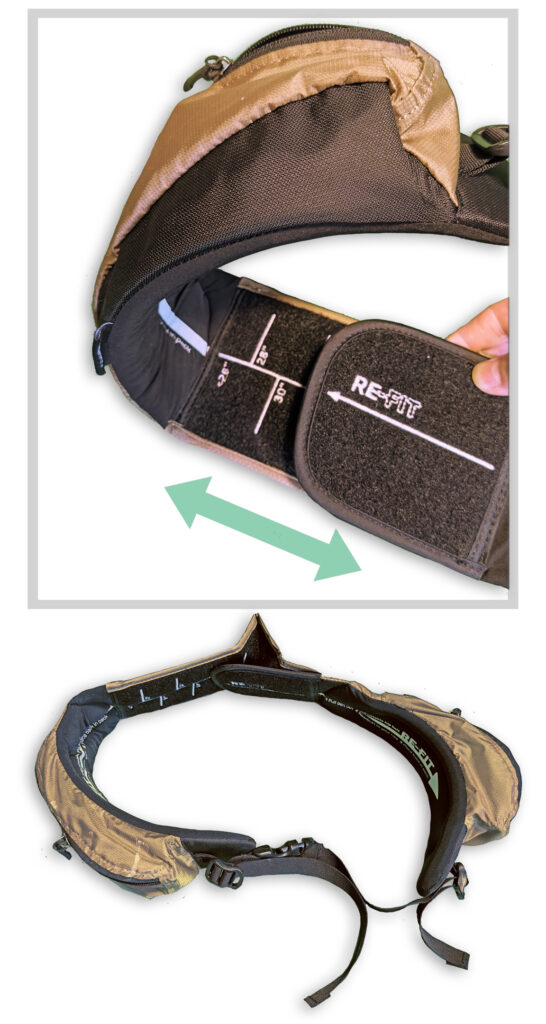
Too often hikers will be carrying too much weight on their shoulders. Your hips are simply stronger and better suited for carrying the packs weight. Think of your shoulder straps as balancing mechanisms. That is, your shoulder straps keep the pack upright and next to your back. Wheras your hip belt carries the pack’s main weight.
Load lifters
Some ultra-light backpacks don’t have load lifter on the shoulder straps because these packs are intended for extremely light gear, usually under 25 punds. Load lifter help keep the weight of the pack close to your body and off your shoulders helping the weight to stay shifted to your hips. For that reason, load lifters are useful comfort feature for winter backpacking.
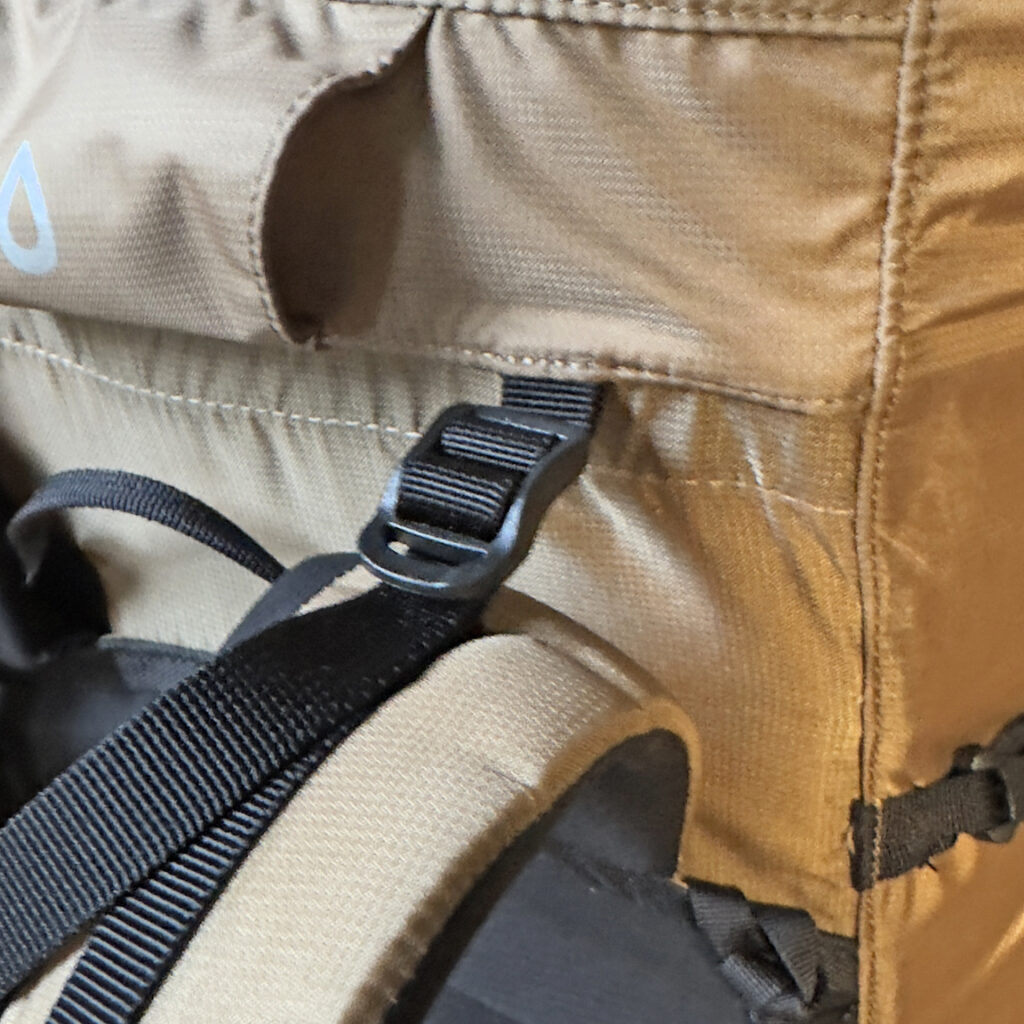
Weight and pack design simplicity
The simpler the backpack design, the lighter the pack. A large compartment design with no lid is lighter than a multi-compartment pack and easy to use. It should have outside pockets for your water bottles, flask, and liquid-fuel bottle and some way to attach a full-size solid pad, snowshoes, and an ice axe. Hip belt pockets are useful for snacks and small gear such as headlamps and sun screen.
Pack color
If you have a color option, a backpack that is a bright color such as yellow, orange, or red, is easier to spot and find in winter whiteout conditions and rescue situations. Unfortunately, bright colors for backpacking gear are becoming rarer. I put an orange pack cover on my backpack in fall to make it more visible for hunters.
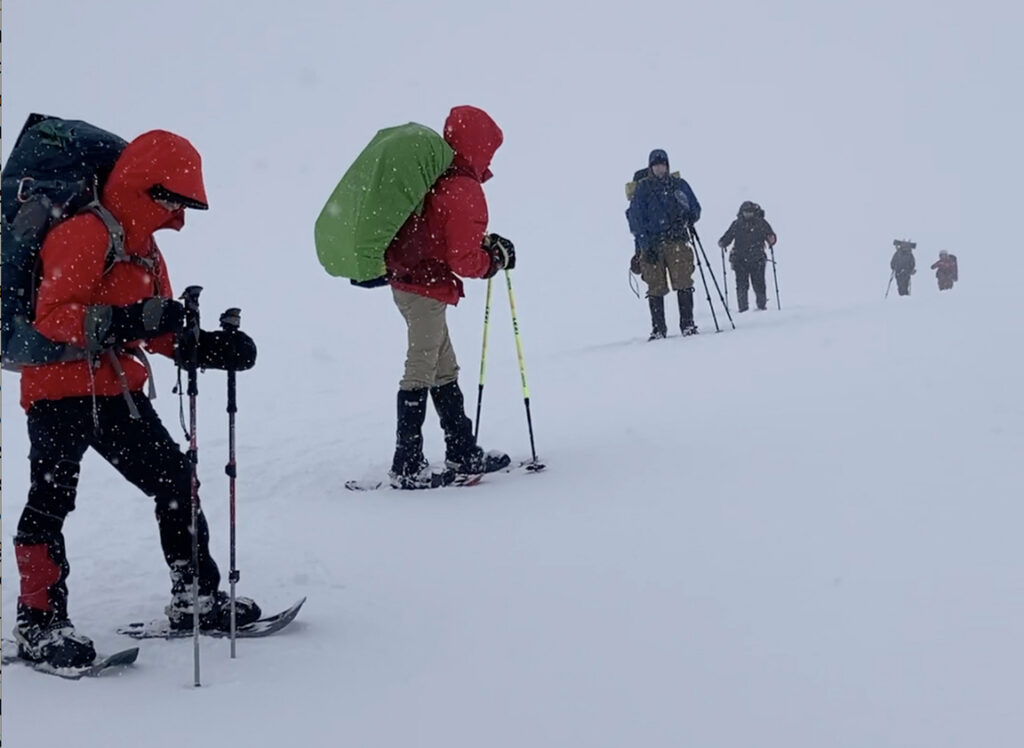
Do you need more than 60 liter capacity?
Think about gear costs before buying a pack. This may effect the capacity of the backpack you need. Lower-cost synthetic sleeping bags and parkas are bulkier and heavier and may require a larger backpack. But otherwise, an ultra-light down sleeping bag and parka, a solo 4-season tent, and even bear-proof canisters will all fit together with your other gear in a 60–65-liter pack. Ultra-light backpacks have load capacities in the 35–40 pound range. If your gear is too heavy, you may need a heavier higher capacity backpack.
A bulky synthetic zero-degree sleeping bag usually cost around $200–250 dollars and weighs around 3.5–4.8 pounds. A more compact down 800-fill sleeping bag will cost $350–1000 and only weigh 2.5–3.5 Same with tents. Some two-person 3-season tents in the $275 range are bulkier and heavier (up to nearly 6 pounds) than some ultra-light solo 4-season tents in the $400–900 range, weighing around 2 lb. 14 oz.- 3 lb 3 oz. pounds.
Don’t let a tight budget stop you from enjoying winter backpacking. I started with a heavy zero-degree synthetic sleeping bag that barely fitted into my 3.5 pound backpack. Once I was confident that I wanted to do more winter backpacking I began upgrading to lighter gear.
Ultimately, keeping a pack light and small will help you stay balanced in deep snow and on steep slopes. Some hikers go ultra-light because they are focused on speed and comfort for long distances. I am focused on light gear because winters require more gear and lighter gear will also make snow travel in the mountains safer, not just easier.
Some winter backpackers are even using 55-liter backpacks. A backpack in the 55–65 Liter range is most likely sufficient for 2–4 day winter trips in the Pacific Northwest. I have used 58 and 60-liter backpacks for years. It is sometimes a tight fit but it works.
It is sometimes a challenge to get four people and for winter backpacks into a single car.
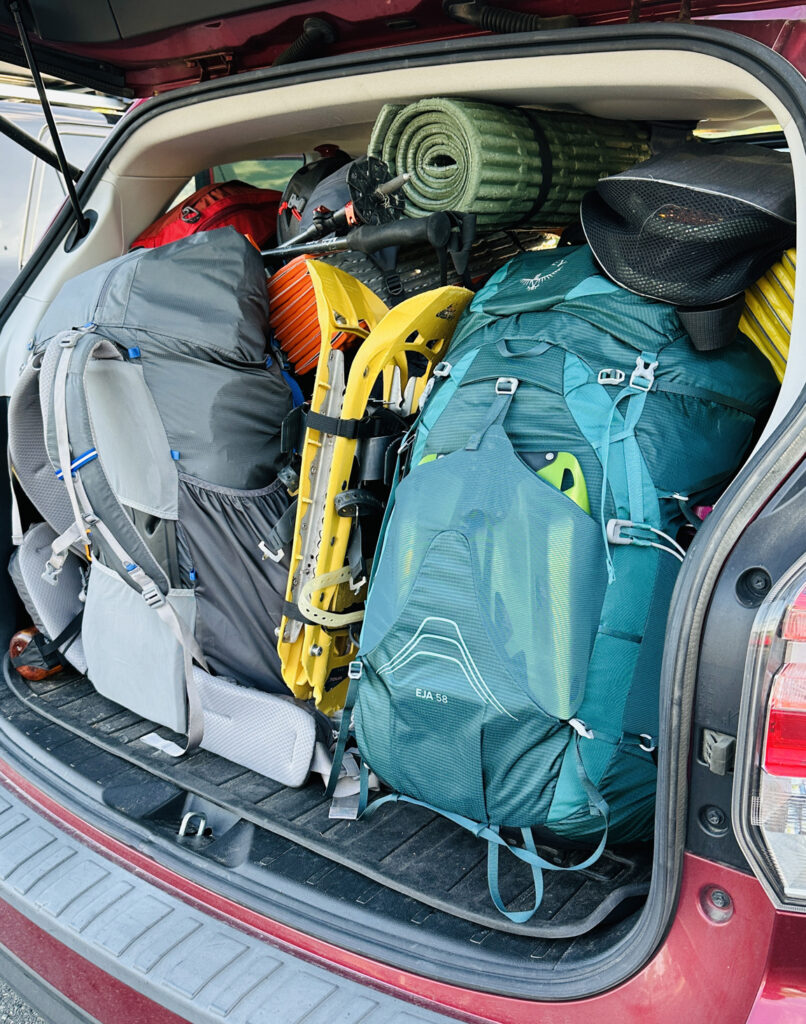
Why follow the 60L/30 lbs Formula
Part of the reason a 60-liter pack is important is because of the pack weight difference. In theory, there shouldn’t be much difference between a 60-liter and a 70-liter pack. However, in reality, the leading companies making ultra-light packs don’t make 70-liter packs, except companies making Dyneema and Polyethylene packs. Most companies making 65–75-liter packs make packs that are overall heavier. It is harder to make an ultra-light backpack that can carry 70 liters of gear comfortably. Most ultra-light packs in the 2-pound range have a load capacity of 35 pounds. To use ultra-light packs you must lower your overall gear weight.
Some of the Dyneema and Polyethylene packs have load capacities of 40 pounds. I have not yet tested these packs myself for comfort. One hiker in our group is using a Zpacks Arc Haul Ultra 60L and is happy with it. Another used a Hyperlite pack and was not happy. He switched to a Granite Gear pack. I have tested the Outdoor Vitals Shadowlight, Gossamer Mariposa, and Granite Gear Crown 3, with 32 lbs loads (complete winter gear + consumables and snowshoes attached to the packs, and they were all comfortable for me. All are 60L packs.
Here is a comparison gear/weight/cost scenario. Assume you have a
- REI Co-op Downtime 0 sleeping bag, 650 fill, 3 lbs, 4 oz, for $239
- Deuter Aircontact Core 65+10 backpack, 65L, 4 lbs 15.4 oz, $250
- REI Co-op Half Dome SL 2+ Tent, 4 lbs. 11.5 oz, $349
These “Big 3” items alone weigh 12 lbs, 14.9 ounces, or around 13 lbs. for $838 (2024). Because these three are your heaviest items, if you can reduce the weight of each one, you can significantly lower the overall weight of your backpack.
Here’s an alternative selection:
- Therm-a-Rest Parsec 0 Sleeping Bag, 800 fill, 2 lbs. 6 oz., $569.95
- Granite Gear Crown 3, 60L, 2 lbs 6 oz, 167.97
- Liepen Air Rise 4-season tent, 3 lbs 3 ounces, $406.
This selection weighs 7 lbs, 15 ounces, or around 8 lbs, for $1143.92. For $305.95 more, around 5 pounds of weight is taken off your backpack. If your backpack weighed 35 lbs, it now weighs 30. The difference will matter in hiking speed, comfort, balance, and safety, especially for smaller hikers (body weight to pack weight ratio). A lighter pack is less likely to injure your back.
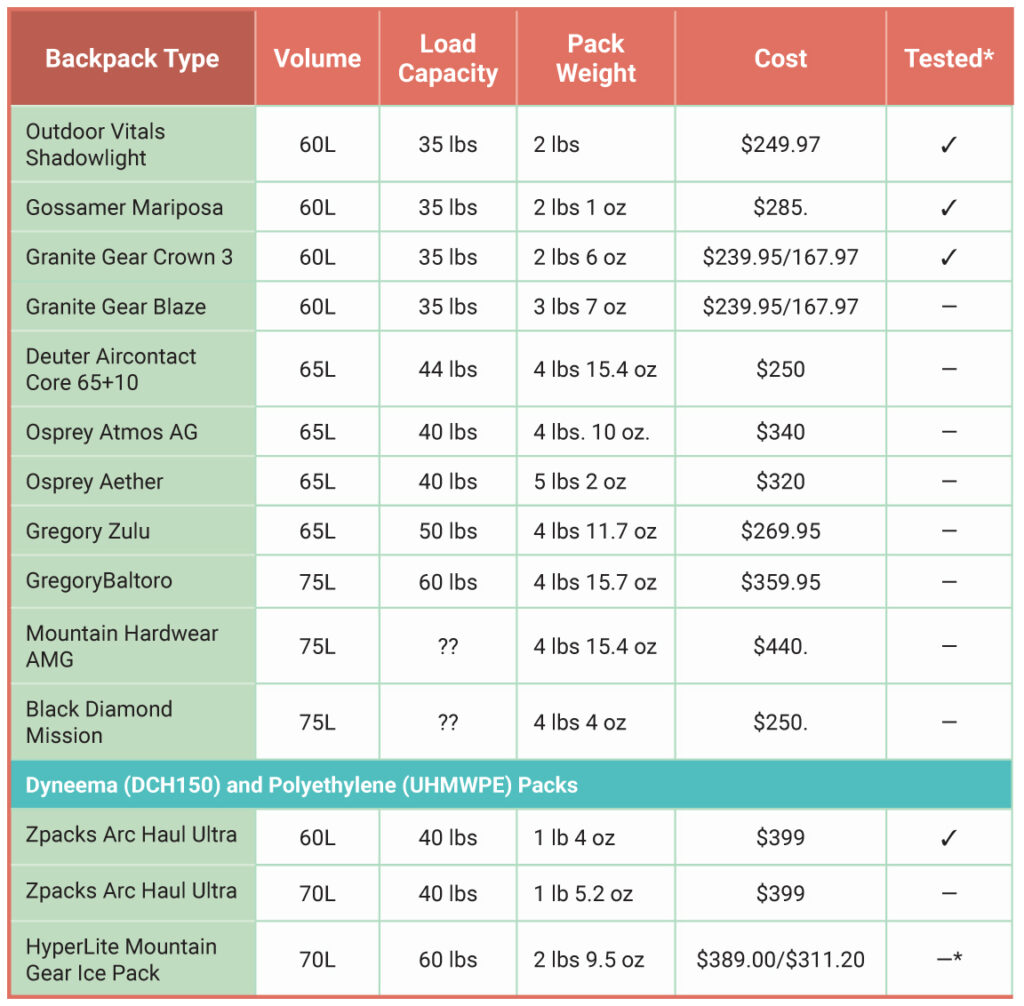
You may also find useful Safety Tips for Packing a Winter Backpack
Have any questions or comments?
In the comment section below, let us know your thoughts. Your comments and questions are welcomed.
